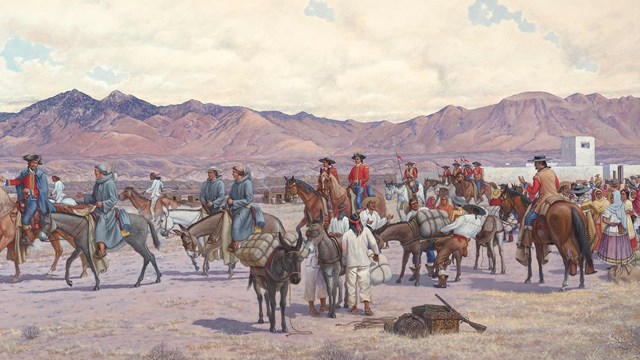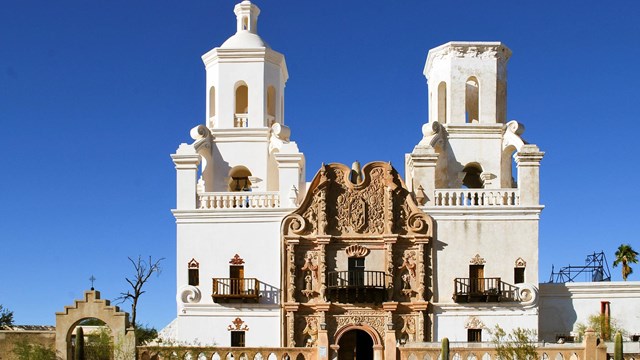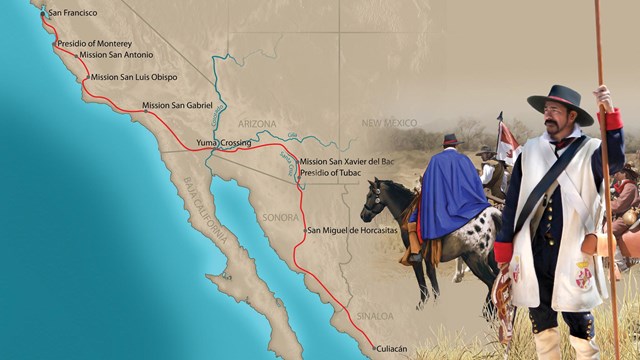|
The Juan Bautista de Anza National Historic Trail retraces the route traveled by the Anza colonizing expedition during the years 1775–1776. Starting in Sinaloa and Sonora, New Spain (now in Mexico) and following existing Indigenous trails, Anza led over 240 colonists to San Francisco to establish a mission and presidio. The expedition was composed of colonists that included 30 soldiers, their wives, and more than 100 children, as well as Indigenous guides, vaqueros, muleteers, and servants, among others. The families reflected mostly the lower castes of colonial New Spain—a mix of Indigenous, African, and European heritage. The historic trail connects Mexico to San Francisco and the 18th century to the 21st. The Anza Trail invites travelers to learn about the interweaving of the three elements of the Spanish plan for the colonization of its northern frontier: presidios (military forts), missions (religious centers), and pueblos (civilian towns) and makes connections to the current-day consequences of their historical actions. On June 27, 1776, the expedition families arrived in the area that is now San Francisco. Anza forged alliances with several Tribes along the route, but ultimately, Spanish colonization advanced a violent and devastating blow to the Tribal worlds as they existed. Today, the Tribal communities whose lands Anza traveled through—Quechan, Ohlone, O’odham, Tongva, and many more—continue to thrive and pass on their traditions. The descendants of colonist Californio families also commemorate their heritage along the Anza Trail. The current 1,200-mile Juan Bautista de Anza National Historic Trail connects history, culture, and outdoor recreation from Nogales, Arizona, to the San Francisco Bay Area. Exploring the Anza Trail is far more than outdoor recreation. The sites along its corridor magnify intergenerational knowledge, complex histories, and vibrant, diverse cultural traditions that honor shared heritage and human experiences. 
People on the Expedition
A diverse band of 240 colonists, including 30 soldiers, their wives, and more than 100 children joined the expedition. Learn more about them 
Places Along the Anza Trail
Learn about the historic sites along the trail, recreational trail segments, and the story behind how the Anza Trail was created. 
Research
Historic journals, expedition information, and learning opportunities. |
Last updated: April 4, 2024
